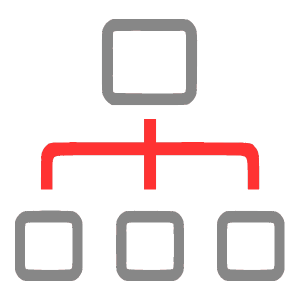

We invite you to consider several things about the NLP Meta Model as you explore the next pages. First, learn both how the NLP Meta Model is used for wonderful results and also how it can be misused, both are being discussed.
The NLP Meta Model chunks down and chunks up. It helps us drive down into more detail. We use it with the intent to clarify our own and other people’s map of the world. It is a tool for learning more specific information about subjective reality. NLP Meta Model
We all have a deep mental structure of experience, or a set of internal mental constructs and understandings. This represents the world around us. And how we communicate in less than perfect ways about what we have stored internally. What we say to each other is the surface structure of our communication. What we hear, i.e. the particular sequence and choice of words people use, is the surface structure of language. NLP Meta Model
What we do not hear is the deep structure. Deep structure is another way of describing a person’s internal mental constructs that support what we actually say to people. It is a far more complex. Rich resources for understanding people are the words people actually use to describe their internal understandings. That is, assuming you can get reasonably accurate access to that deep structure. NLP Meta Model
To identify the real Deep Structure behind it and provide a working model of your subject’s internal Deep Structure.
Here is one place in NLP where it may be “appropriate” to be looking for what is not working optimally in a person.
Three things happen to sensory experience on the way to our brains:
Not only do we encourage you to put effort in learning the NLP Meta Model, we are aware that you want to have more information at the top of your fingertips.
Below we have specified all the language parts according to Deletion, Distortion and Generalization for your convenience.
Now you have identified what has been deleted, distorted and/or generalised from our or another person’s experience, you can then begin linguistically work to provide your subject (yourself or other people) with NEW behavioral options, new behaviors and new beliefs.
Perhaps we can make a definition of the NLP Meta Model a little clearer. Have you ever heard that the Milton-Model is the inverse of the Meta Model? Well, that is only partly true. The Milton-Model is a collection of hypnotic language patterns modeled from Milton Erickson, MD, the father of medical hypnosis.
These Milton Model patterns were designed to change deep structure by artfully vague. They were designed to induce confusion and changes in internal mental constructs by allowing people to fill in the vagueness blanks, with their own, more detailed experience.
The NLP Meta Model is intended to express subjective experience more fully. The Milton Model is designed to omit as much specificity as possible. People using the Milton-Model will often use the inverse of Meta Model patterns to make intended Meta Model violations, or, to help make useful changes to a person’s deep structure of understanding.
The interesting thing about many of these language patterns is that they exist in real life all around us. Most people use them frequently without consciously understanding their effects or implications. The result is that we have learned very well in modern society how to use language to confuse ourselves and make life difficult for ourselves.
So one result of this is that we can listen for NLP Meta Model language patterns in other people’s language. We can then use the Milton Model language patterns to expand others or our own set of mental or behavioral options. NLP Meta Model
The NLP Meta Model relies on the intuition of the user. Once you have gained a working knowledge of all patterns, you will start hearing these patterns in the language of people around you. And often, as you listen to other people, or perhaps ask questions and receive answers, you’ll be able to notice potentially several NLP Meta Model patterns in each answer you receive.
At that point, perhaps you will ask another question designed to gain greater detail about a point you heard a sentence or two behind that. Perhaps you will pick one of the NLP Meta Model patterns you just heard from the subject in order to gain more information about that area of the subject’s experience. You will have to trust yourself as to how thorough and effective an internal model you are creating needs to be.
Be warned as the NLP Meta Model easily breaks Rapport. Please read the article about Responsible Use of The Meta Model.
First, think of it as exploring a tree, where the tree represents someone’s complete subjectivity. You approach it from a distance. All you can see is the trunk and the foliage. As you reach the trunk, and look up, you can see the first branch. Or any number of branches. Next you choose to explore and when you get to it. And to go out on that branch, you can look at smaller branches or twigs and leaves. Or backtrack and climb up another main branch and start exploring there.
It is highly unlikely that you know the whole tree intimately. But some branches you will know very well. You may have spent time looking at quite a few leaves on certain branches. You get to choose how much of the tree you explore, assuming the tree is willing to wait for you to finish exploring or even to let you climb it. NLP Meta Model
As you build models of other people’s deep structure, you will notice gaps that you will decide you do not need to fill. And you may miss some gaps that would have been important to fill. Instead of worrying about either the error, just concentrate on your improving skills and be respectful of other people, keeping rapport and everyone’s best intentions in mind. You will do fine as you progress step by step. NLP Meta Model
And again, rely on your intuition to decide how far to take your NLP Meta model skills and which patterns to track down further.
We generated a list for your ease of mind to read more into the Meta Model. Some books are hard to find, some are easy to read. Take your pick!
Remember, to increase your efficiency as a NLP Practitioner, know your positive intention for the message you want to convey, build rapport, observe eye accessing cues and pay attention on what and how you use language. Leave people and business in a better place that where you found them, every day! Put yourself to work and start making the NLP Meta Model part of your knowledge. The sooner you start, the sooner you benefit.
Mind Tools provides NLP Practitioner and NLP Master Practitioner Trainings and Certifications. We educate you according to the renowned, latest and highest standards set by the Society of NLP. We will train you thoroughly in all the corners of Neuro-Linguistic Programming and some extras we learned from Dr. Richard Bandler directly.
Our Licensed NLP Practitioner Training starts in:
On Checkout use the code NLP10PCTOFF and gain an extra 10% off our already discounted price.